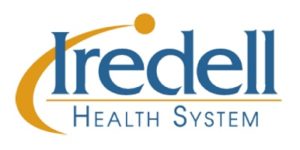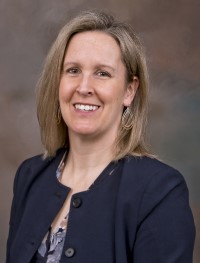
Special to Iredell Free News
Your child is just starting to get back into their “school routine” when you notice a small whitish-gray insect on their neck. Your heart sinks while your hand instinctively reaches up to scratch your head. You know immediately what is on your child — lice.
Now what?
First and foremost, there’s no need to panic. Head lice are very common in school-aged children.
Although lice cannot actually hop or jump, they sure seem to spread quickly. In fact, an estimated 6 million to 12 million lice infestations occur in children every year, according to the Centers for Disease Control and Prevention (CDC).

“Lice infestations are extremely stressful for both children and their parents, but they are not actually harmful, just a nuisance,” said Dr. Rachel B. DiSanto, a family medicine physician at Statesville Family Practice.
Even though they pose no real health threat, the thought of bugs in your child’s hair, and possibly in your home, may make you feel uneasy. To help you remain calm, take a look at the facts of lice.
What are head lice?
Head lice are tiny whitish-gray insects about the size of a sesame seed. They are most commonly found behind the ears and around the neckline.
Lice feed on small amounts of blood from a person’s scalp. These bites cause itching, so your child will be scratching at their head frequently. You may also see bite marks and irritation around your child’s hairline.
Additionally, lice can live one to two days without a meal, so you might see these fast-movers crawling on your child’s bedding, carpet, or toys.
Female lice lay eggs, called nits. These small, yellowish-white, oval eggs may be attached at an angle to the side of a hair strand. According to the CDC, female lice each lay about six nits a day. After hatching, they can live on your child’s scalp for about 30 days.
A common misconception, lice do not discriminate. They can attach to dirty or clean hair, find their home in rich or poor families, and can live in all places and communities. Personal hygiene has no effect on lice.
How did my child get lice?
Head lice most commonly spread from close, prolonged, head-to-head contact. But your child may also have gotten lice from direct contact with:
• Clothing or accessories the affected child was wearing.
• Articles, like combs, stuffed animals, or towels, the affected child was using.
• A bed, couch, pillow, or carpet the affected child was lying on.
“Lice are common in school because children are often in closer quarters and more likely to touch each other or share clothes and accessories. Schools also may store items in close proximity, like hooks outside a classroom for backpacks, coats, and hats,” said DiSanto.
According to DiSanto, lice cannot spread on dogs, cats, or other pets.
How do I treat head lice?
When you notice your child has head lice, make sure to check other members of your family as well. You should also notify your child’s school and their friend’s parents.
There are several ineffective at-home remedies for lice circling the internet, like “suffocating” lice with mayonnaise or oily products. However, there is no scientific evidence that this works.
You also cannot use hot water to wash out lice.
“Lice are very hardy, and it is difficult to drown or suffocate them. Nits are also hard to remove because they stick to hair shafts with a glue-like substance,” said DiSanto.
Your best option is to go to your local drug store or pharmacy and grab topical medication and a nit comb.
Fortunately, there are many over-the-counter medications and products to treat head lice.
According to DiSanto, pyrethrin and permethrin are two types of medication you can grab at your local pharmacy for the treatment of head lice. Make sure to follow the label instructions on these medications carefully.
Both of these medications only kill live lice, not unhatched eggs. So, after applying the medication, use a lice comb to remove any nits. You should continue using the comb nightly, ideally on wet hair, to check for and remove any nits and lice.
“There are a lot of expensive products and services out there that advertise miracle cures for lice. But using the topical medications and thoroughly combing your child’s hair with a lice comb nightly for two weeks will almost always clear the infestation without having to spend a lot of money,” said DiSanto.
According to DiSanto, there is growing resistance to lice medications due to overuse, so if you still see lice crawling after a full course of treatment, you should contact your child’s healthcare provider. There are prescription medications if the over-the-counter treatments are not helping.
In addition to removing lice from your child’s hair, you should also make sure to remove lice from your home.
“Any fabrics or soft toys that have come in contact with your child’s head recently should be washed in hot water and dried on high heat. If items cannot be washed, they should be put in bags and set aside for two weeks,” said DiSanto.
This includes cleaning of your child’s bedding, towels, and clothing. Aside from that, you should also vacuum your furniture, carpets, and car seats.
To avoid another lice infestation, teach your child to avoid head-to-head contact with children and not to share hair accessories.
Additionally, make sure to check your child’s hair regularly throughout the year for lice.
DiSanto practices at Statesville Family Practice, located at 310 Davie Avenue. If you are looking for a primary care provider, or one for your child, DiSanto treats patients of all ages, from babies to elderly adults.
LEARN MORE
For more information, or to schedule an appointment with Dr. DiSanto, please call the office at 704-873-3269.
About Iredell Health System
Iredell Health System includes Iredell Memorial Hospital; Iredell Mooresville; Iredell Home Health; Iredell Wound Care & Hyperbaric Center; Community and Corporate Wellness; Occupational Medicine; the Iredell Physician Network and more. Iredell Memorial Hospital is the largest and only nonprofit hospital in Iredell County. The comprehensive healthcare facility has 247 beds; more than 1,700 employees; and has 260 physicians representing various specialties. Centers of excellence include Women’s and Children’s; Cardiovascular; Cancer; Surgical Services and Wellness & Prevention. The Health System’s newest campus, Iredell Mooresville, is home to the area’s only 24-hour urgent care facility, as well as an ambulatory surgery center, imaging center, rehabilitation services, and physician practices. The mission of Iredell Health System is to inspire wellbeing. For a comprehensive list of services and programs, visit www.iredellhealth.org.



